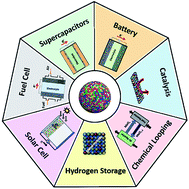Recent progress of high-entropy materials for energy storage and conversion
Abstract
The emergence of high-entropy materials (HEMs) with their excellent mechanical properties, stability at high temperatures, and high chemical stability is poised to yield new advancement in the performance of energy storage and conversion technologies. This review covers the recent developments in catalysis, water splitting, fuel cells, batteries, supercapacitors, and hydrogen storage enabled by HEMs covering metallic, oxide, and non-oxide alloys. Here, first, the primary rules for the proper selection of the elements and the formation of a favorable single solid solution phase in HEMs are defined. Furthermore, recent developments in different fields of energy conversion and storage achieved by HEMs are discussed. Higher electrocatalytic and catalytic activities with longer cycling stability and durability compared to conventional noble metal-based catalysts are reported for high-entropy materials. In electrochemical energy storage systems, high-entropy oxides and alloys have shown superior performance as anode and cathode materials with long cycling stability and high capacity retention. Also, when used as metal hydrides for hydrogen storage, remarkably high hydrogen storage capacity and structural stability are observed for HEMs. In the end, future directions and new energy-related technologies that can be enabled by the application of HEMs are outlined.

- This article is part of the themed collections: Editor’s Choice 2023: Advancing electrocatalysts for a sustainable future. and 2021 Journal of Materials Chemistry A most popular articles


 Please wait while we load your content...
Please wait while we load your content...